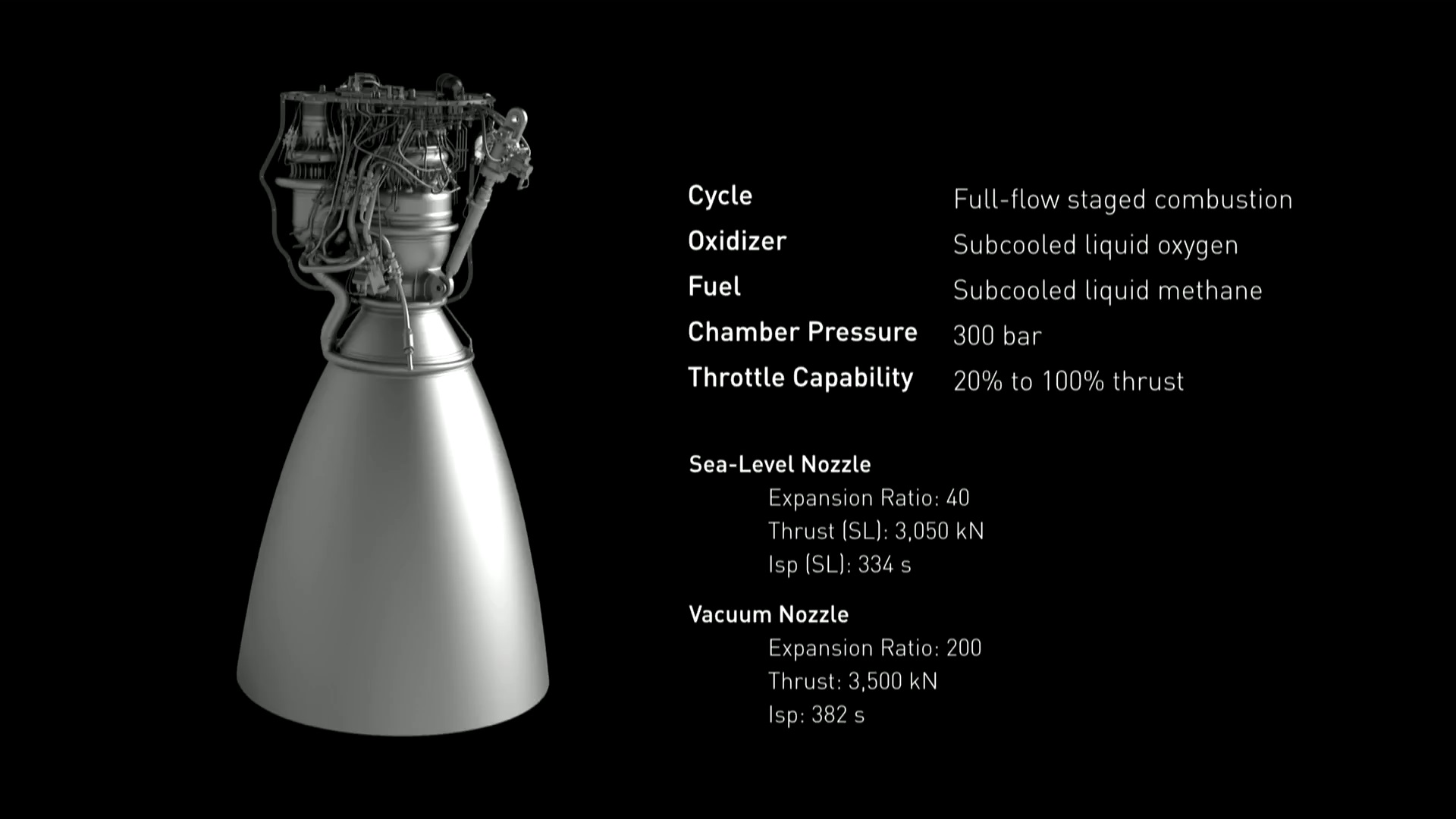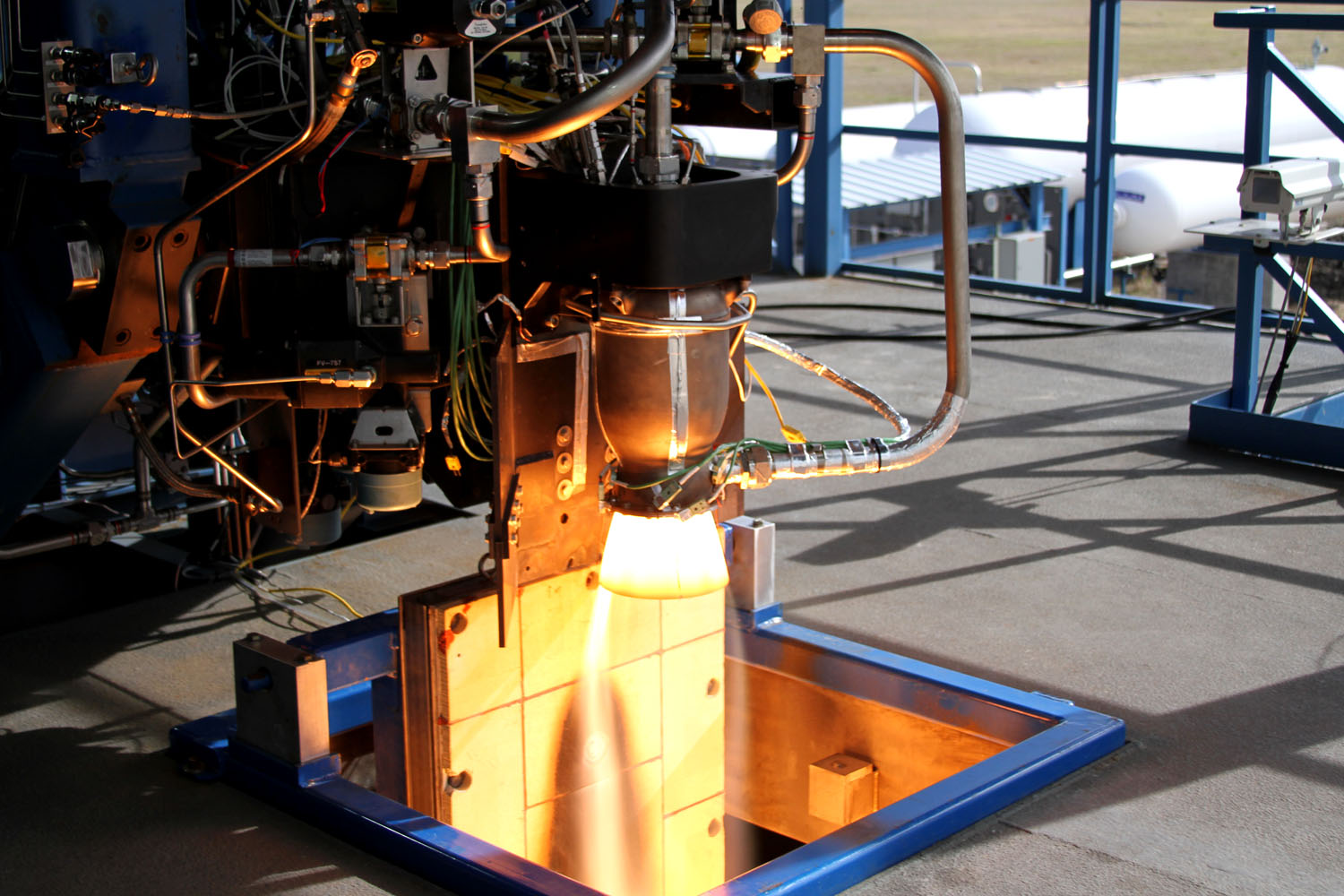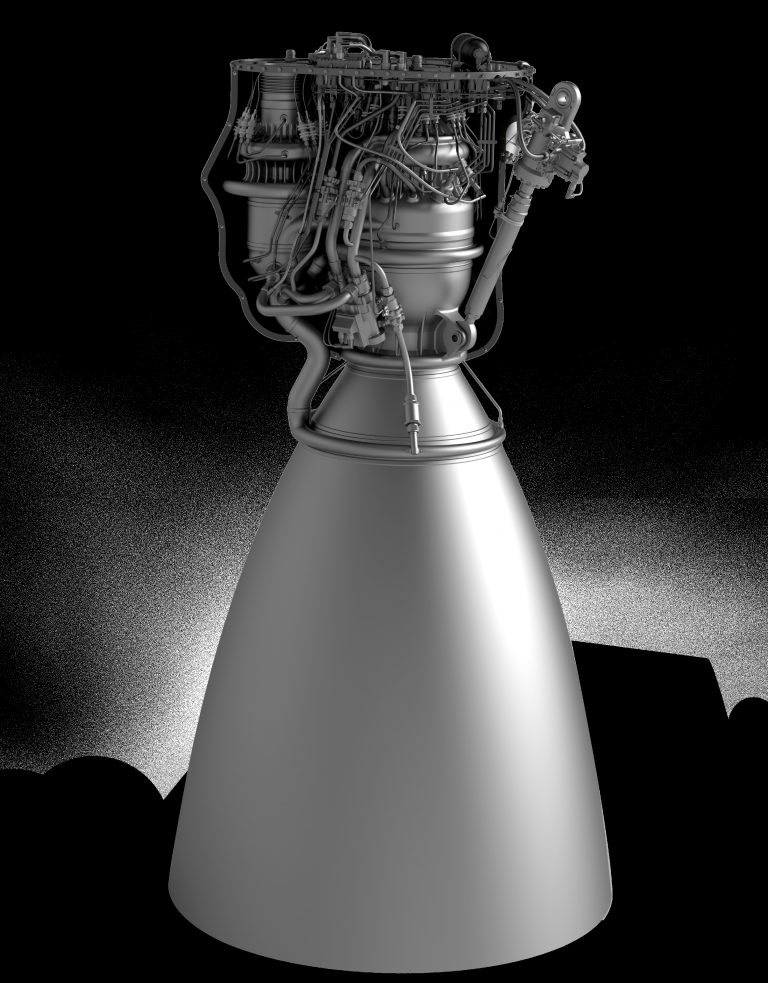How SpaceX successfully fired a new Raptor engine aboard Starship without an explosion

Saturday, October 23, 2021 | Chimniii Desk
Key Points
Engineers at the business ignited a vacuum version of a Raptor rocket engine linked to the Starship upper stage for the first time. The most typical solution is to design the first stage of a rocket with engines tuned for performance at sea level and the upper stage with vacuum-optimized engines. It aims to resolve the nozzle-size conundrum by flying with three Raptor engines at sea level and three Raptor engines at vacuum. So how did SpaceX complete the vacuum-optimized engine's test firing without destroying it? Elon Musk, SpaceX's founder, responded to this query on Twitter, stating that the business solved the problem by designing the Raptor engine to generate extremely high chamber pressure.
Advertisement
 Pic: The SuperDraco Engine from SpaceX features a fully 3D-printed thrust chamber – (Credit: SpaceX)
Pic: The SuperDraco Engine from SpaceX features a fully 3D-printed thrust chamber – (Credit: SpaceX)SpaceX took another step toward verifying the rocket engine technology that will power its Starship rocket on Thursday evening. Engineers at the business ignited a vacuum version of a Raptor rocket engine linked to the Starship upper stage for the first time.
At nightfall in South Texas, the test firing lasted only a few seconds. However, it looks to have been successful, marking another accomplishment in a series of technical tests SpaceX must complete prior to launching Starship on a Super Heavy rocket for an orbital test flight. This could occur in early 2022.
Of course, SpaceX has previously tested its Starship vehicle with Raptor engines. The vehicle has ascended to around 10 kilometres in certain prototype test flights, powered by up to three Raptor "sea level" engines. However, testing a rocket with a Raptor variant suited for operation in the vacuum of space is altogether another matter.
Advertisement
Expanding Nozzles

Pic: Raptor CAD Model
Of course, rocket engines contain numerous components, but the largest and most visible is the nozzle, which directs the flow of exhaust gas. This exhaust is produced in the combustion chamber during the combustion of the oxidizer and propellant. This exhaust gas is then accelerated by forcing it through a small opening called a throat. As the exhaust travels supersonic, it expands as it enters the nozzle, where the longer and broader the nozzle, the quicker the exhaust travels.
Gas that burns more quickly coming from a rocket engine is advantageous because it provides increased thrust. Increased thrust enables your rocket to lift a greater mass. Thus, an expanded nozzle results in improved performance.
Therefore, why aren't all rocket engines equipped with massive nozzles? Due to a phenomena known as "flow separation," which occurs when the internal combustion engine's gas flow separates from the nozzle walls. This can result in the creation of turbulence and vibrations. In the worst-case situation, the engine could explode up. Although there is no absolute threshold for when this occurs, the probability of flow separation increases as the exhaust pressure entering the nozzle goes below 50% of the ambient pressure.
This is not an issue in space, since air pressure is almost zero. However, the larger the nozzle at sea level, the greater the possibility of flow separation.
The most typical solution is to design the first stage of a rocket with engines tuned for performance at sea level and the upper stage with vacuum-optimized engines. For example, the Falcon 9 rocket has a first stage with nine Merlin engines with smaller nozzles that perform all of the work in the lower atmosphere, and a second stage with a Merlin vacuum engine with a much larger nozzle that performs all of the work in outer space.
Advertisement
Alternative strategies
NASA's space shuttle, on the other hand, used a more hybrid approach. Its primary engines, which fired continuously throughout the flight profile from launch to orbit, made performance sacrifices on both ends. The shuttle's nozzle ended up being as large as possible at sea level—it pushed the boundaries of flow separation without exceeding them—but significantly smaller than would be optimal in a vacuum.
The upper stage of SpaceX's Starship is designed to fly in both dense atmospheres and space. It aims to resolve the nozzle-size conundrum by flying with three Raptor engines at sea level and three Raptor engines at vacuum. Thursday's test was the first time one of the vacuum engines was mounted to and fired from a Starship vehicle.
The most experienced US upper-stage engine, the Aerojet Rocketdyne-built RL-10, has a high expansion ratio, owing to the fact that its nozzle is substantially larger than its throat. As a result, this engine can only be tested in a massive vacuum chamber on the ground. SpaceX conducted their test on Thursday outside, in South Texas, just a few feet above sea level.
Advertisement
So how did SpaceX complete the vacuum-optimized engine's test firing without destroying it?
Elon Musk, SpaceX's founder, responded to this query on Twitter, stating that the business solved the problem by designing the Raptor engine to generate extremely high chamber pressure. Additionally, because the engine is not entirely tuned for vacuum operation, there was sufficient margin to avoid flow separation from destabilising it.
Advertisement